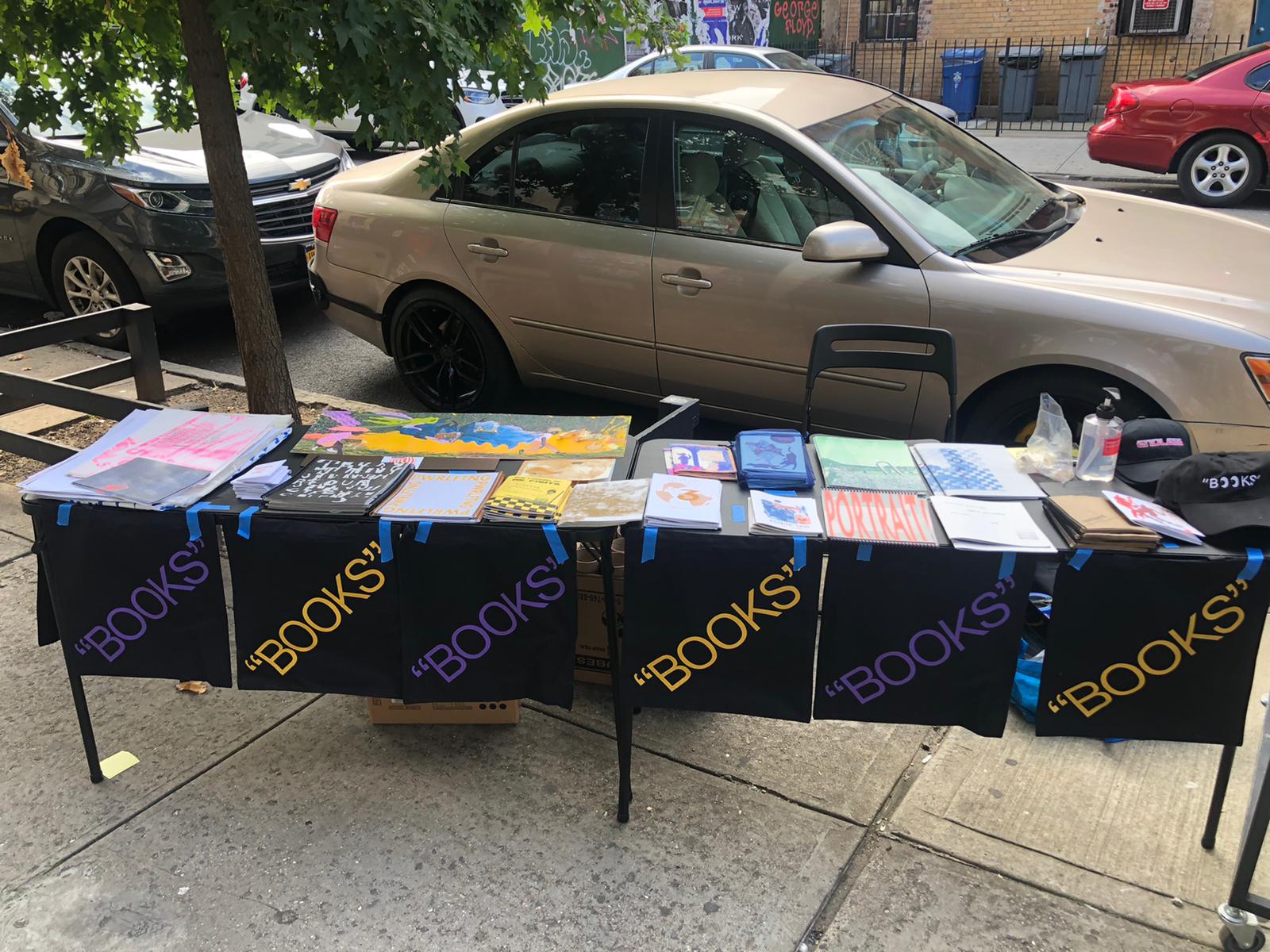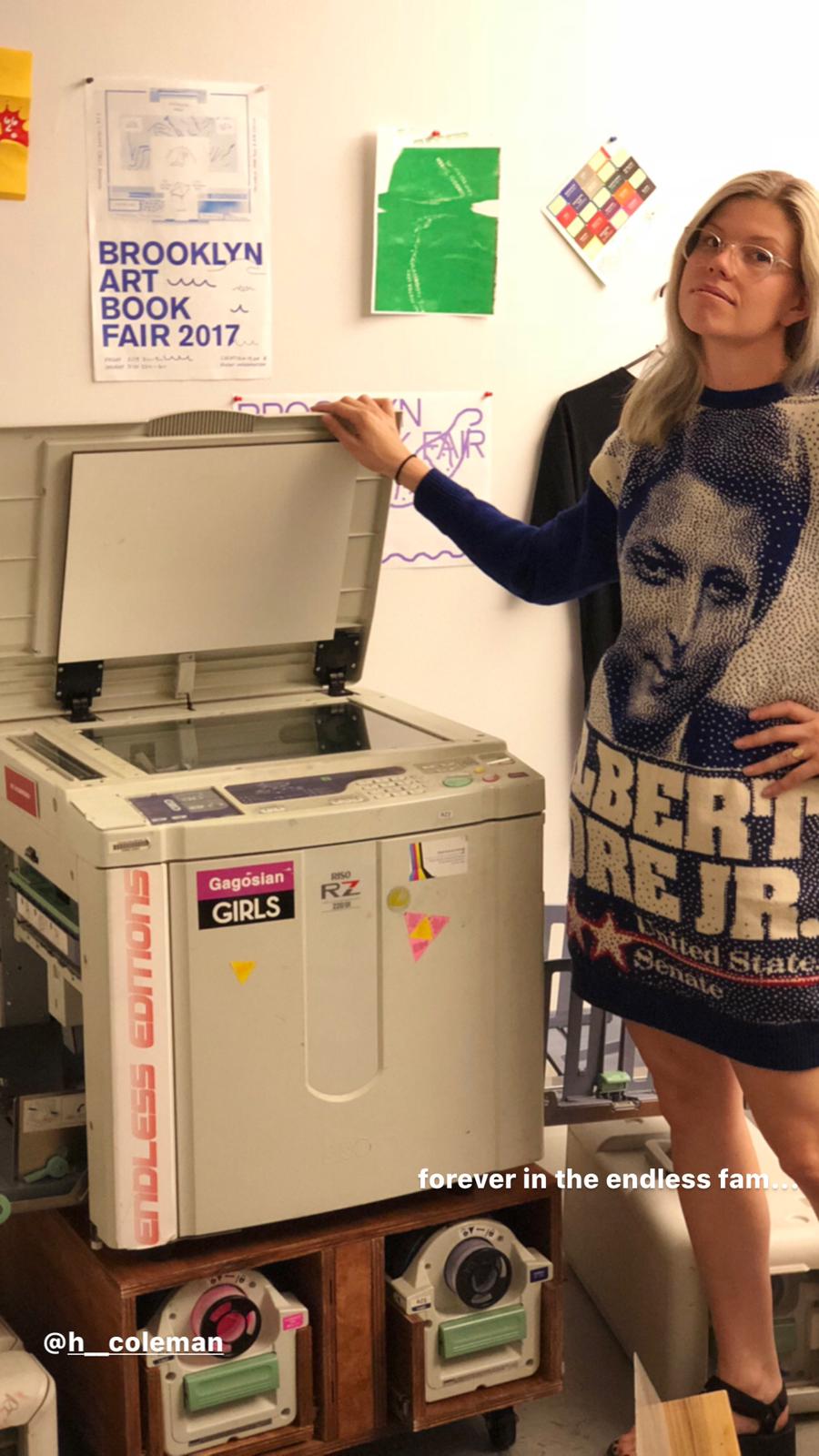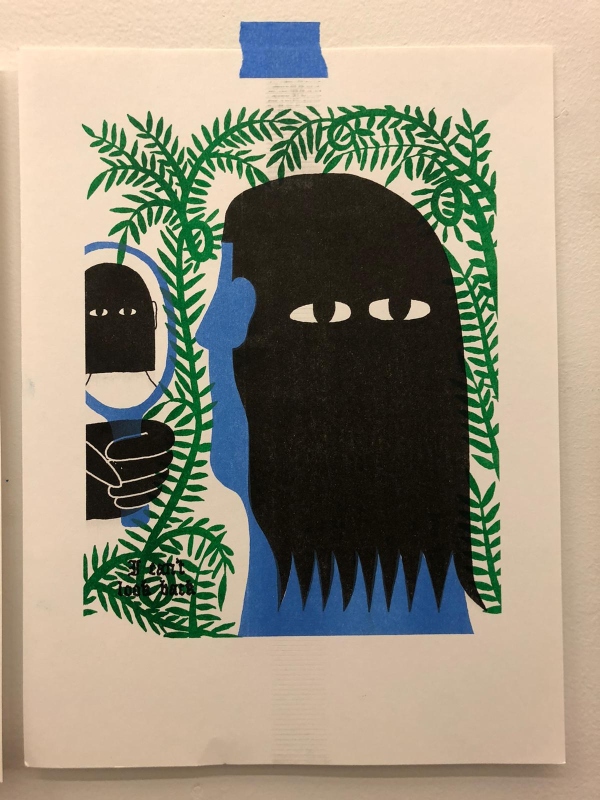Q&A with Paul John from Endless Editions

First of all, would you like to tell us a little bit about yourself and how Endless Editions first started out?
Preface: I am not a writer, I’m a talker. I apologize if the things below do not follow a linear format, I’m trying my best to get this interview into Anki & BABF in time to publish.
Hello → I am, like most people in the arts here, a lot of different things, and so is Endless Editions. I am an artist, but started my journey into artist books as a printer and publisher working at the Robert Blackburn Printmaking Workshop. It’s through the printshop that I learned most of all I know about working in the arts. Endless Editions began as a collaborative project both curatorially via exhibitions, and in book making. We continue to grow and change. We are all artists in one way or another.
How is Endless Editions organized?
Endless Editions is a completely volunteer run organization. All of our projects, whether they are curatorial or publishing related are managed by artists or arts administrators. A lot of different people work on projects, and often we collaborate with other publishers, galleries, and stores. There have been a lot of helpful hands in the past seven years… some to note are: Alick Shiu, Brianna Sancious, Jia Sung, Sarula Bao, Marisha Lozada, Hannah Coleman, Samantha Shroeder, Benjamin Campbell, Ari Tizani, Margaux Salgado… and I’m sure so many more… we truly are lucky to have so many volunteers excited and dedicated to the endless mission

How did you come up with your name?
Came in a dream? Can’t remember.
Endless Editions is described as both a publishing and curatorial initiative. How does the curatorial process work?
We have two main curatorial projects: the Endless Editions Biennial, which is an exhibition, and the Brooklyn Art Book Fair. Both have separate teams, which are again volunteers. We also often work with Galleries and Exhibition spaces to put together curatorial projects.
The curatorial process is different every time. All of Endless is a conversation.

Would you like to talk a little bit about your latest publication?
We’re about to publish an artist book with Eddie Perrote, an illustrator here in New York, we’re also hoping to restart our CopyShop Residency, but it’s been difficult since we’re still operating at a much slower pace due to COVID.
Why do you work with the Risograph?
Seize the means of production!
What is the Copy Shop Residency program, and how did it start out?
Based on the idea of a local copy shop, that someone could come in and make copies to self-publish. We hoped to work with a larger audience of artists and thought that a book-making residency was the best way to publish a diverse range of artists. To alleviate the financial burden for artists in independent publishing, we thought we could share the costs, labor, and edition with artists. The residency was also informed by conversations we’ve had with other publishers and how they work with artists.
Ultimately the Copy Shop Residency is a way for artists to make books that will help them the most. We say it’s 50/50 split in each category, but often Endless just makes the whole book with our Work Exchange Volunteers, and we give the artist whatever they want! It’s a way to make books, and support artists.
Why did you start the Brooklyn Art Book Fair in 2017?
We felt like the typical fair-model of pay-to-play inhibited small presses and emerging artists to participate and have a positive economic impact. It was frustrating to break even at fairs after having invested a sum to participate. We idealized a fair that compensated or guaranteed an income for all participants. Our fair has always been free to participate, we envisioned the fair as a place that supported vendors so we always tried to get free food, have volunteers distribute water or bananas, and offer respite when people needed a break.
We also wanted a fair that introduced artists books to a different demographic, outside of the gallery, museum, or art public. The fair was hosted at an indoor gymnasium and placed near one of the largest public parts in Brooklyn. The fair is surrounded by a small playground for families, a skate park, and an outdoor track/football field. It was important to host the fair at this specific location, that had an incredible audience who was there to visit the park, but could stumble into an alternate reality. We held programming on the pool deck (the pool was still empty when we hosted the fair) and offered artists a unique stage to perform.
In June, you organized the Brooklyn Virtual Art Book Fair, which was one of the first virtual art book fairs in these times. Would you like to tell a little bit about that process and your experiences?
We haven’t run an online store since 2015… so we had no idea what to expect. Early on, we held online meetings with the vendors to tell them what we imagined: a single store with everyones publications on their own page, and once the fair was over we would order inventory from the vendors to then ship out to the customers. We also asked the vendors what they hoped to see for this virtual iteration, which led us to create a schedule where the public could engage with vendors during time slots, and vendors could also meet their “neighbors” as the rooms had 3-4 exhibitors. I think this was another really special part of this online fair, vendors were able to give a modest presentation, publics were able to ask questions or just hang out, we often did online puzzles together during these sessions… it was really charming.
When the fair ended, it was challenging and time consuming to fulfill all the orders, but it happened! We were humbled by the support of this community.
Do you think that the (necessary) move to make art book fairs virtual will somehow change how artists’ books are produced and perceived (in the future)?
The most surprising feedback we received from VBKABF was that people really enjoyed being able to ruminate on books by visiting them and saving them in their cart. While they missed touching them, it was nice to be able to have more personal time, without the large crowds that these events often draw. Was good for librarians too!
I think one thing online book fairs need to figure out is how to centralize sales and order fulfillment, this whole linking to many different stores creates an unpleasant experience for buyers and vendors.

What sort of steps do you wish for the gallery system / art market to take in the years ahead?
Not sure I’m the best to answer this question. I think it needs to be more sustainable and more generous, equal distribution of earnings, profit sharing, comrade ideas. I think it’s also worthwhile to note that running a gallery and selling art is very difficult, and costly. A lot of work doesn’t sell, or get written about, so both the artist and the gallery take a hit… it’s complicated, i’ll be the first to admit I don’t really understand how it works.
This is why Endless Editions believes artist books to be the most democratic & responsible way to participate in the arts. Books are inherently cheaper, more widely available, and are able to provide a wide impact without needing wealthy collectors, PR firms, or journalism to cement it’s impact… books can just exist. Books are able to permeate different publics as they can be housed at Libraries, Galleries, and personal collections. They also typically support living artists, and those who aren’t represented in either the art market, or public sphere.
For me, a book is something personal. You open it and enter it’s world, and it in turn takes a piece of you. I think the gift of a book is not just an object, but a part of you that you give.
A part of Endless Editions’ work also includes educational seminars – how does this connect with the publishing part of what you do?
Teach how to seize the means of production.
If we do a little bit of reminiscing – what is your best Art Book Fair memory before covid?
Seeing Diane Keaton in Los Angeles, and all the book fair dogs. Meeting so many different types of people and introducing them to the artists we’re working with.
Art book fairs are like summer camp, or the first day of middle school (grades 6-9), you are excited, running into friends from around the world… catching up on the latest goings-on.
I personally miss being in different cities and learning about their methods of working, seeing their studios, and getting a taste of their lives.

How have your studio practice and plans for publications been affected by the restrictions due to covid?
We’ve stopped our work exchange program, and are on a slow-pause for the copy shop residency. It’s difficult to know when these will start up again fully. We’ve done a lot, for free, the past seven years, and I think we’ve earned a breath whilst COVID pushes us into isolation.
What is on the horizon for Endless Editions?
With a name like Endless Editions, somethings always cooking.

